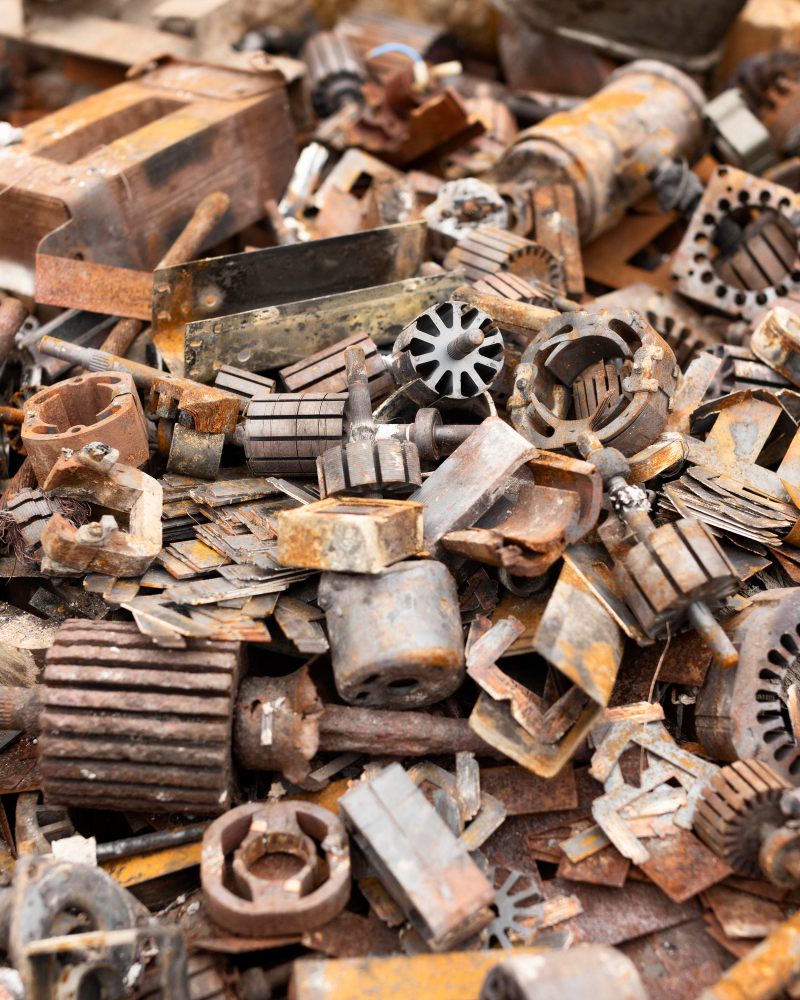

JUN 11, 2025
Copper and brass are among the most valuable metals accepted by scrap metal recycling companies. With an infinite recyclable life, copper is used in electrical wiring, piping, automotive parts, industrial machinery, and construction materials. On the other hand, brass scraps are commonly reused in plumbing fixtures, decorative hardware, musical instruments, and ammunition casings. Unless you’re an expert who specializes in scrap metal recycling, it can be difficult to tell the difference between copper scraps and brass scraps.
You should separate copper from brass if you're serious about getting the best value from your scrap metal. In this article, RCM Recycling discusses five ways to distinguish copper scraps from brass scraps. As seasoned scrap metal buyers, we know the characteristics of all types of scrap metals, including copper and brass. Read on to learn more about the differences between copper scraps and brass scraps.
One of the easiest visual indicators is the color. Copper has a reddish-brown hue that may darken with oxidation over time. If the piece is clean and unoxidized, it will have a distinct pink-orange tint. Brass, in contrast, tends to be more yellow or gold in appearance due to its zinc content. If you polish both with a bit of sandpaper or steel wool, copper will shine with a rich, reddish tone, while brass will reveal a brighter, yellow-gold surface.
Copper is denser and heavier than brass. If you have two similarly sized items and one feels noticeably heavier, it’s likely copper. This isn’t the most precise method, but it can help when comparing multiple pieces. Just keep in mind that alloys can vary, and items may be hollow or filled, so weight alone isn’t foolproof. You may have to rely on other ways to distinguish the two types of scrap metal.
A spark test is a traditional method used by scrap metal buyers to identify metals. When struck against a grinder or file, copper produces few, short, red sparks or no sparks at all. Brass, on the other hand, may emit more sparks due to the zinc and other elements in the alloy. While this method is best used with safety precautions and proper tools, it can be very telling when done correctly.
Neither copper nor brass is magnetic, so if a piece sticks to a magnet, it’s something else, probably steel with a brass or copper coating. Still, using a magnet can help you eliminate other metals from your pile and ensure you're only sorting non-ferrous metals. Just note that the lack of magnetism alone won’t help you distinguish between copper and brass.
This old-school technique involves striking the metal lightly and listening to the sound it makes. Copper usually produces a lower, duller tone, whereas brass rings out with a higher-pitched, bell-like sound due to its alloyed structure. While this method requires a trained ear, it can be useful if you’re familiar with the differences.
These simple techniques can save you time and earn you more money. Whether you're selling to a scrap yard or recycling for your own projects, accurate sorting ensures you’re getting the right value for your efforts.
If you’re looking for reputable scrap metal buyers in Stockbridge, look no further than RCM Recycling. We accept many types of scrap metal, including copper, brass, steel, iron, aluminum, zinc, and many more. Moreover, we offer competitive rates for various types of scrap, making us one of the top-paying scrap metal buyers. Our team will help you schedule a convenient pickup and haul away your scrap metal for recycling. Reach out today to learn more about our scrap metal recycling service.